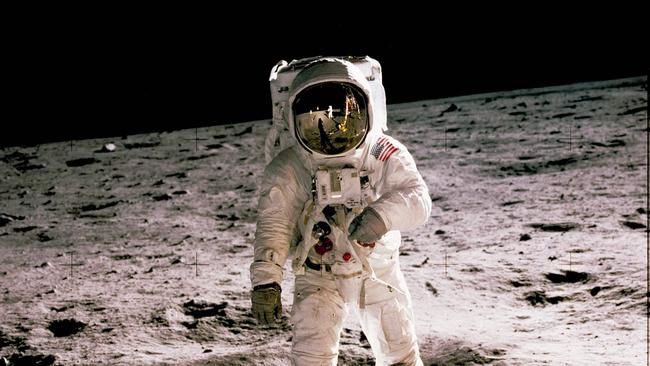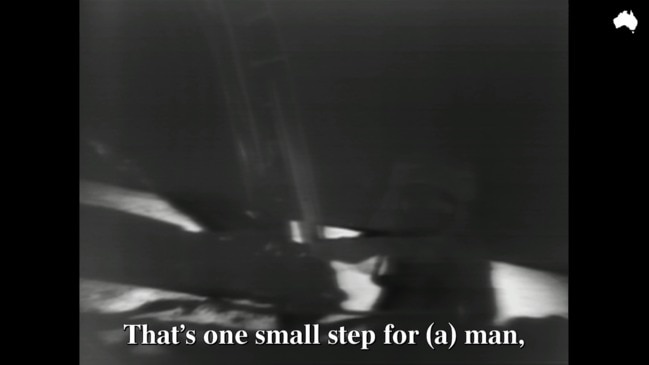After 50 years, moon landing still our giant leap
It was an outrageous challenge; flying to the moon. But 50 years ago today it happened.

It was an outrageous challenge; almost unthinkable, that we should fly to the moon. Yet we had been thinking of it since the dawn of time.
Over millions of years, as humans looked up to the sky and saw the silver orb of our nearest celestial neighbour move through our skies, we wondered: What is it? Why is it there?
These were the threshold questions that led us to: Who are we? And why are we here?
Over the aeons we found answers in the form of Rainbow Serpents and Dreamtimes or God’s six days of creation. We held it to our hearts in romantic songs. We wondered if it were made of cheese. But in the age of science, that was not enough. We had to go there. Because it was there.
On this day 50 years ago the world stood still, held its breath and exhaled a collective sigh of relief shortly before dawn on Australia’s eastern seaboard as two humans in a frail contraption called Eagle weaved across a pitted lunar landscape and landed in the Sea of Tranquillity.
It was a moment that will never be forgotten in the course of human history; the moment when humanity first threw off its earthly shackles and stepped on to another heavenly body.

It could so easily have gone terribly wrong. In the lead-up to the flight of Apollo 11 more than a dozen American astronauts and Russian cosmonauts had died in training. The risks were so great that US president Richard Nixon had two speeches prepared — one grasping the glory of success, the other solemnly proclaiming: “Fate has ordained that the men who went to the moon to explore in peace will stay on the moon to rest in peace.”
It very nearly did go wrong. A computer — a clunky joke of a thing when compared with today’s computers — froze as the Apollo landing module approached its target, forcing pilot Neil Armstrong to take over and fly manually over rocks and craters to find a safe landing spot.
He came within seconds of exhausting his fuel. His first words — “Tranquillity Base here. The Eagle has landed” — were met with: “You’ve got a bunch of guys turning blue down here.”
And so we were. I had the great privilege of being at the Apollo mission control centre in Houston, Texas, on that day.
Half a century on, everyone over the age of, say, 55 remembers where they were when men landed on the moon.
Six hours after touchdown, the rest of us gathered around black and white television sets to see blurred pictures of the first moonwalk and hear Armstrong’s first words: “That’s one small step for man; one giant leap for mankind.”
-
Tracking computer was ‘the size of small house’
At the time of the Apollo moon landing my dad, Michael Evenett, was an electrical engineer employed at Honeysuckle Creek. He was working at the tracking station that picked up the first minutes of the moon landing.
He is still friends with some of his Honeysuckle mates. They are cheery and humble.
Dad has retained his interest in computers. We had the first personal computer in the street and he taught himself to code.
I was three and only remember that he wasn’t home for what felt like weeks leading up to the event. I also remember the computer at Honeysuckle, which was the size of a small house.
Dad gave me presents like a small welding kit for birthdays so I could learn about circuits. His granddaughter (fittingly) is doing computer science at uni.
Jeannie Paterson, Canberra
More Coverage





